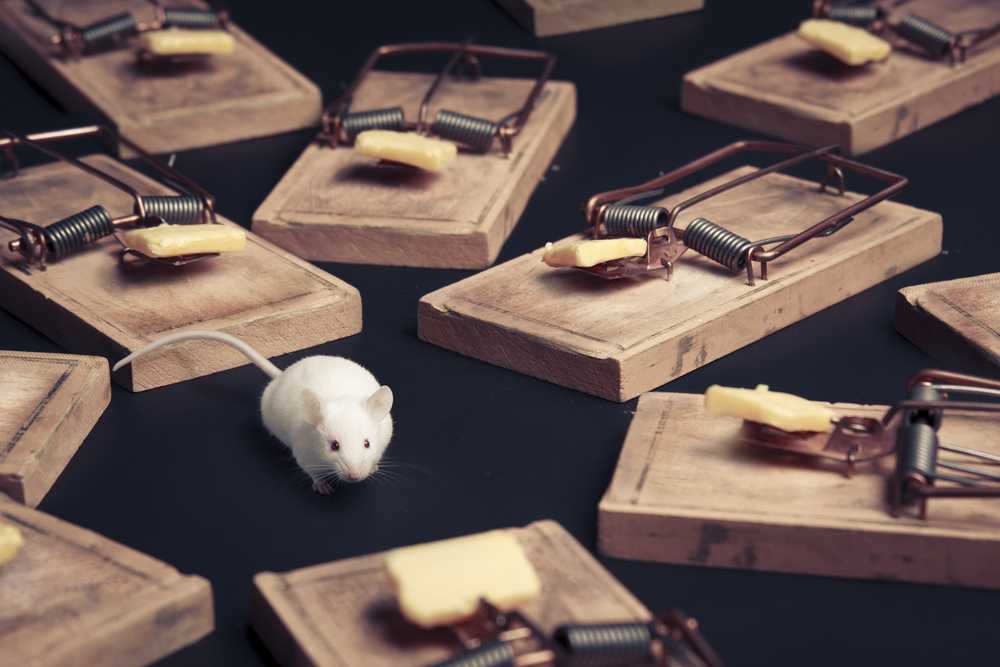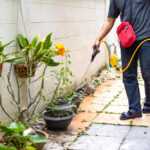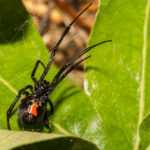Mice Control Services | Safe and Effective Solutions
Looking for mice control? Get fast, safe, and effective solutions to eliminate mice, protect your home, and stop future infestations.
Effective Mice Control: Tips and Strategies
Struggling with mice in your home? This comprehensive guide on mice control covers how to identify an infestation, understand mouse behavior, and use effective methods to eliminate them.
- Early detection of mouse infestations through droppings, fresh gnawing marks, and noises is crucial for effective control.
- Implementing sanitation, mouse-proof construction, and utilizing bait traps or poison baits are key strategies for managing mouse populations.
- Regular inspections and preventative measures, such as reducing attractants and sealing entry points, help maintain control and prevent future infestations.
Identifying a Mouse Infestation
Early detection of a mouse infestation is key to effective rodent control. Common indicators include recognizing mouse infestations droppings, fresh gnawing marks, and tracks in dusty areas. You might also notice fine shredded paper or other fibrous materials used for mouse nests or hear strange or unfamiliar noises, especially at night.
Using talcum powder or chalk dust can help you identify mouse tracks in suspected areas. Noticing these signs early allows for prompt action to prevent a full-blown infestation.
Recognizing Mouse Droppings
One of the most telling signs of a mouse infestation is the presence of mouse infestations droppings. These small, dark pellets resemble grains of rice and are often found in hidden areas such as attics, garages, or behind appliances. Finding mouse droppings signals active mouse presence and necessitates immediate control measures.
Detecting Mouse Nests
Mouse nests are typically constructed in secluded, warm spots close to shelter and food supply. House mice use materials like fine shredded paper, fabric, or other fibrous materials to build their nests. Common locations for these nests include inside walls, attics, and cluttered areas.
A discovered nest indicates an established infestation, needing immediate attention to prevent further spread.
Noticing Strange or Unfamiliar Noises
Mice are nocturnal creatures, making them more active at night. If you hear strange or unfamiliar noises like scratching or squeaking, especially during the night, it could indicate the presence of mice.
These regularly repeated sounds strongly indicate mouse activity and should be addressed promptly.
Understanding House Mice
Effectively controlling mice requires an understanding of their characteristics, behavior, and reproductive habits. House mice live primarily nocturnal lives, adapting their activities to nighttime to avoid predators and human detection.
Understanding their physical traits, behavior patterns, and rapid reproductive capabilities aids in developing better infestation strategies.
Physical Characteristics
House mice are small rodents with relatively large ears and small eyes. They have gray or brown fur and typically range from 5 1/2 to 7 1/2 inches in length, including their tail. Their distinct physical characteristics make them easily identifiable.
Behavior Patterns
House mice exhibit increased activity during the night, making them primarily nocturnal. They are agile climbers, capable of running up rough vertical surfaces and wire cables. Mice seldom venture far from their shelter and food supply. They have strong gnawing abilities, allowing them to create entry points into buildings and cause significant damage.
Reproductive Habits
A female house mouse can produce between 5 and 14 litters each year, with typical litters containing about 5 to 6 young. The gestation period is around 19 to 21 days, and house mice can reproduce throughout the year, although wild populations may slow down during colder months.
Their rapid reproduction accelerates population growth, emphasizing the need for effective control measures.
Effective Control Measures for Mice
Effective control measures for mice involve a combination of sanitation, mouse-proof construction, and population reduction. Maintaining cleanliness, sealing entry points to exclude mice, and using bait traps or poison baits in tamper resistant bait stations can significantly decrease the mouse population in your home.
These measures are crucial for long-term rodent control.
Sanitation Practices
Keeping your home clean is a fundamental strategy to deter mice. Regularly cleaning areas where food is stored and promptly cleaning up food spills can significantly discourage mice from nesting. Storing food in airtight containers and ensuring garbage is stored in containers with tight lids can help eliminate potential food sources that attract mice.
Keeping your home tidy and avoiding clutter effectively prevents mouse infestations. Eliminating food and water sources deters rodents from your property. Implementing these sanitation practices creates an environment less conducive to mouse activity.
Mouse-Proof Construction
Sealing openings larger than a quarter-inch prevents mice from entering buildings. Since mice can squeeze through gaps as small as 1/4 inch, sealing all potential entry points is necessary. Materials like steel wool or copper mesh effectively block mouse access when used to fill gaps and holes, plugging holes properly to exclude mice.
Besides sealing entry points, ensure construction hardware prevents mouse access. This might include installing door sweeps, repairing damaged screens, and ensuring that windows and doors fit tightly. These steps are crucial for keeping mice out of your home.
Population Reduction Techniques
Trapping is an effective control method for reducing mouse populations. Another technique involves the use of poison baits. Trapping can involve snap traps or glue boards, while poison baits can be used when bait acceptance is low. Considering the rapid reproduction rate of house mice, these methods are crucial for population control.
Trapping Methods
Trapping is a highly effective control method for quickly reducing mouse populations. Various traps are available, including snap traps, multiple capture live traps, and glue boards. For increased effectiveness, place traps no more than six feet apart in areas with evident mouse activity.
Snap Traps
Snap traps are traditional, wood-based traps that effectively kill mice and are reusable. Plastic snap traps, often pre-baited, can be a more durable alternative. Snap traps placed along walls and near food sources with evident mouse activity are more effective.
Use high-protein baits like peanut butter, chocolate candy, or bacon tied securely to the trigger to attract mice.
Multiple Capture Live Traps
Multiple capture live traps are designed to catch several mice at once without harming them, allowing for humane relocation. These traps should be placed along common mouse pathways to increase capture rates.
This method is ideal for those preferring humane trapping without killing mice.
Glue Boards
Glue boards catch and hold mice attempting to cross them much the same way flypaper catches flies. They are most effective when placed in areas where mouse activity is evident, such as near droppings or scratching noises.
Baiting glue boards is not recommended since attractants can reduce adhesive effectiveness. Place glue boards along walls where mice travel but avoid areas accessible to children or pets.
Poison Baits
Poison baits are a critical component of effective mice control strategies. Careful monitoring ensures poison baits remain bait fresh throughout the treatment period.
Following safety precautions prevents accidental poisoning of pets and children.
Poison baits come in various forms, including grain baits in meal or pelleted form, blocks, paste, and properly formulated bait boxes or tamper resistant bait stations.
Anticoagulants, such as Warfarin, Pival, and Chlorophacinone, are very effective mouse poisons. They are also considered to be among the least toxic options for home use.
Proper Placement of Baits
Placing poison baits in high rodent activity areas, like near droppings or nests, maximizes effectiveness. Typically, placing baits near walls and corners where mice travel will yield the best results.
Ensure fresh bait is available continuously until mice stop feeding.
Safety Precautions
Always store rodenticides out of reach of children and pets to prevent unintentional exposure. Strictly following safety precautions when using poison baits avoids accidental poisoning. Wearing rubber gloves while handling baits can further ensure your safety.
Preventive Measures
Preventive measures are crucial for long-term house mouse control. This involves a combination of cleanliness, sealing potential entry points, and population management.
Keeping your home and property uncluttered significantly reduces future infestation likelihood.
Regular Inspections
Frequent checks help identify early signs of mouse activity. Monthly inspections for droppings, gnaw marks, and other signs can prevent major infestations. Regular cleaning aids in locating signs of mice, enhancing control measures.
Sealing Entry Points
Inspecting for and sealing small gaps and cracks is necessary, as rodents can fit through tiny openings. Since mice can enter through gaps as small as a quarter-inch, sealing any holes or cracks in your home is crucial.
Materials like steel wool or caulk effectively close off potential mouse entry points.
Reducing Attractants
Sanitation practices are crucial for controlling mouse populations as they eliminate food sources that attract mice. Cleanliness strategies like proper food storage, regular cleaning, and immediate disposal of food waste deter mice.
Dealing with Dead Rodents
Proper handling of dead rodents minimizes health risks and prevents accidental poisoning. Promptly removing and disposing of dead mouse carcasses avoids attracting other pests and mitigates unpleasant odors.
This practice ensures a safe environment and effective rodent control.
Safe Disposal
Safely dispose of dead mice by placing the carcass in two sealed plastic bags to prevent leakage and contamination. Wear disposable gloves when handling dead rodents to prevent exposure to harmful pathogens.
After securely bagging the mouse, dispose of it in a covered trash bin to avoid attracting other pests.
Preventing Odors
Clean the area with a bleach solution or disinfectant to eliminate odors from dead mice. Ventilating the area by opening windows can help dissipate lingering smells.
Strong deodorizers help mask and eliminate the smell of dead mouse odors in your home.
Effective mice control requires a comprehensive approach that includes identifying signs of infestation, understanding mouse behavior, implementing control measures, and taking preventive actions. By maintaining cleanliness, sealing entry points, and using bait traps or poison baits, you can effectively manage and prevent mouse infestations.
Frequently Asked Questions
What are the early signs of a mouse infestation?
The early signs of a mouse infestation include mouse droppings, gnawing marks, tracks in dusty areas, and unusual noises during the night. Addressing these signs promptly can help prevent a larger problem.
How can I safely dispose of dead mice?
To safely dispose of dead mice, place them in two sealed plastic bags to prevent leakage and contamination, and always wear disposable gloves during handling. This ensures both your safety and hygiene.
What are the best preventive measures to keep mice out of my home?
To effectively keep mice out of your home, conduct regular inspections, seal any entry points, and maintain proper sanitation and food storage to reduce attractants. These measures will significantly minimize the risk of infestation.
What types of poison baits are available for mouse control?
For mouse control, poison baits are available in grain baits in meal or pelleted form, block, paste, and ready-to-use bait boxes or tamper resistant bait stations. Choosing the right type can enhance effectiveness in managing mouse infestations.
How can I eliminate odors from dead mice in my home?
To eliminate odors from dead mice in your home, clean the area thoroughly with a bleach solution or disinfectant, ensure proper ventilation, and use strong deodorizers to mask and neutralize any lingering smells.



